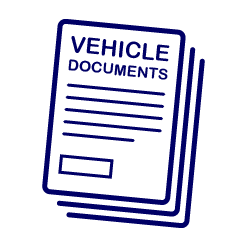Guide overview:
- Light scratches, small chips and minor interior marks are usually classed as fair wear and tear, meaning you won't usually be charged for them at the end of your lease.
- Dents, deep scratches, cracked glass, damaged alloys, torn upholstery or missing equipment are unacceptable damage, and these issues may lead to penalty charges.
- If you damage your lease car, repair it using an approved repairer as soon as possible to prevent it from worsening.
- You can appeal any charges you believe are unfair, and simple preparation, like cleaning the car and checking equipment, can help avoid unnecessary fees.
Returning a lease car can feel daunting, especially if you've spotted a scratch, scuffed wheel, or a mark on the upholstery and you're wondering whether it counts as normal wear and tear.
The good news? Fair wear and tear guidelines exist to protect you from unfair charges and to make the whole process predictable and transparent.
In this guide, we'll walk you through what counts as acceptable wear and tear and how to prepare your lease vehicle before it's collected. Whether you're researching car leasing or coming to the end of your contract, this will give you everything you need.
- What is fair wear and tear on a lease car?
- Where to find fair wear and tear guidelines
- What counts as 'normal' wear and tear?
- What damage is considered unacceptable?
- Wear and tear by car area
- What to do if you damage a lease car
- How damage charges are calculated
- Can you appeal wear and tear charges?
- How to prepare for returning your lease car
- Thinking about your next car?
Please note, the information provided on this page is intended as a guide only. For exact information, please contact your finance provider.
Fair wear and tear refers to the natural deterioration that happens to a vehicle during everyday use. This might include light scratches, small scruffs, and minor interior fading, all completely normal for a vehicle that's used regularly.
Crucially, wear and tear isn't the same as damage:
- Wear and tear = expected, acceptable, age-related.
- Damage = avoidable or excessive deterioration that requires repair.
Lease providers follow a clear industry standard to determine what's reasonable, so you're not penalised for everyday driving.
Check out our video below for an explanation:
When you return your vehicle to the finance provider at the end of your agreement, it will be inspected for any damage that falls outside 'fair wear and tear'. You will be liable to pay for any excess damage found in the form of lease-end penalty charges.
The same fair wear and tear rules apply for business and personal customers, although there are three different guides for different types of vehicles:
- Cars
- LCVs (light commercial vehicles including vans and minibuses)
- HGVs (heavy goods vehicles – those over 3.5 tonnes GVW)
The BVRLA (British Vehicle Rental and Leasing Association) sets the industry standard for fair wear and tear across the UK.
Each finance provider uses these guidelines as a base but will also have their own specific rules. It’s important to follow the version supplied by your finance provider to avoid any unexpected charges when your vehicle is returned.
If you’re nearing the end of your lease and need a copy of your funder’s fair wear and tear guidelines, our team can help. Drop us a call on 0345 811 9595 and we'll make sure you get the right information for your vehicle.
“In 2024, the average fair wear and tear charge was £368. Keeping your vehicle well maintained is the best way to avoid unnecessary costs, and it’s always worth addressing any damage early before it has a chance to worsen.”

Funders are aware that after a couple of years and several thousand miles on the clock, the car won't be in exactly the same condition as when it arrived.
- Small chips under 25mm where the base metal isn't exposed
- Scratches to the windscreen that don't obstruct the driver's line of vision
- Minor alloy scruffs up to 25mm
- Small interior marks or light upholstery fading
- General signs of use on high-touch areas like door handles
Remember: Before returning your vehicle, please ensure you consult the official wear and tear guidelines from your finance provider. The guidelines detail what is acceptable for different areas of the vehicle and include specific guidance on general appearance, documentation and keys, paintwork, and tyres.
After 36 months on the road, most cars will show:
- Slightly dulled paintwork
- Minor chips on the front bumper
- Small marks on the windscreen
- Mild tyre wear within legal limits
This is completely expected and rarely causes any issues.
Unacceptable damage goes beyond everyday driving. This includes anything broken, missing, unsafe, or clearly neglected.
- Damage to wheels and trims
- Chips or dents on the bodywork
- Scuffs, scratches and scrapes to the paintwork over 25mm
- Rips, burns or holes in the vehicle’s seats
- Unrepaired impact damage
- Adhesive residue
- Windscreen chips or cracks in the driver's line of sight
- Missing keys, service books, or equipment
Unacceptable damage will lead to penalty charges at the end of your lease agreement. For more information on end-of-lease charges, check out our guide on returning your lease vehicle.
“If you’re ever unsure about what counts as acceptable wear and tear, check your finance provider’s official guidelines. They include measurements and photos to help you understand exactly what will and won’t incur charges”

- Ensure the vehicle’s exterior is sufficiently clean to allow a detailed inspection
- Make sure the vehicle is roadworthy, and no warning lights are illuminated on the dashboard
- All electronic safety features and devices must be in working order
- There must be at least 50 miles of fuel (or residual charge in the battery if an electric vehicle) in the vehicle
- There should be no rust or corrosion on any part of the bodywork or trim of the vehicle
- Small dents of up to 15mm are acceptable, provided there are no more than two per panel and the paint surface is not broken. Dents on the roof are not acceptable
- Scratches and abrasions up to 25mm are acceptable, provided the primer or bare metal is not showing
- All badges, labels or advertising fitted to the bodywork or glass of the vehicle should be removed before collection
- Any difference in paintwork colour noted following the removal of advertising, labelling or logos is not acceptable
- Convertible roofs must be fully operative and free from rips and tears
- A tow bar, if fitted, must be in good, rust-free condition with electrical connections working correctly. A ball cover must be in place
- Light scratching on the windscreen is acceptable, provided it does not interfere with the driver’s line of sight. Chips, cracks or holes are not acceptable
- Any cracks or chips in the lights which restrict the function of the light must be repaired
- Missing, cracked or damaged door mirrors are not acceptable
- Adjustable and/or heated door mirrors must work correctly
- Panoramic roofs must fully function, with no chips, cracks or holes
- Windscreen wipers must be present, secure and in good condition, and the washer reservoir must have sufficient liquid
- All tyres, including the spare, must be legal with more than 1.6mm of tread
- Any damage to wheel trims or alloys (for example, caused by kerbing) must be rectified
- Dents and holes on steel rims and the main body of the wheel are not acceptable
- The spare wheel or tyre mobility set must be on-board and meet legal requirements
- All original wheel caps and locking wheel nuts must be returned
- The interior of the vehicle must be valeted and cleared of rubbish
- All interior fittings (e.g. rear view mirrors) must be present and intact
- All upholstery and trim must be clean and odourless with no visible burns, tears or staining
- Scratches on treads, sills and seals that reflect regular use are acceptable
- Torn or split floor coverings or damage to surrounding trim panels are not acceptable
- Accessories such as parcel shelves, load covers, boot liners, restraining straps and nets must be returned with the vehicle
- The vehicle must meet the current MOT standard
- No warning lights should be illuminated on the dashboard
- Brake discs or drums caused by excessive wear or metal-to-metal contact from worn-out disc pads are not acceptable
- Engine damage due to running a vehicle with insufficient coolant, oil or broken internal components is not acceptable
- Any significant impact damage to the vehicle’s underside is not acceptable
- All documentation such as the owner’s manual etc. must be in the vehicle on return
- The vehicle service book must be date-stamped by an authorised repairer
- For service records that are held electronically, a printed copy of the maintenance/service record must be retained
- For vehicles older than three years, a valid MOT certificate must be place
- A full set of keys, including master and spares, must be returned with the vehicle
- Any radio and security code cards must be in the vehicle on return
- Any personal items must be removed from the vehicle before return
- Any personal data stored in the vehicle’s satellite navigation or media system must be erased
- All original equipment, accessories and controls (including sat-nav SD cards) must be present and operate correctly
- Any accessories mounted on the dashboard such as mobile phone holders, dash cams, and portable sat-nav units must be removed, and any holes or other damage must be neatly repaired
Keeping up with scheduled servicing protects you from unexpected costs at the end of your lease. An accredited servicing outlet should carry out regular maintenance and servicing, and the vehicle service record must be stamped at each service.
Regular cleaning of the interior and exterior will also help ensure the vehicle looks good. Polishing the vehicle exterior around four times a year will help reduce the effects of any stone-chip damage, limit the effects of air-borne contamination (e.g. bird droppings), remove traffic grime and make routine washing easier.
Other standards that you will be expected to follow include:
- Maintaining the vehicle in accordance with the vehicle manufacturer's guidelines
- Keeping the vehicle in good condition to maintain its performance and preserve its safety features and emission standards
- Following the manufacturer's recommendations regarding fuel and fuel blends, additives such as AdBlue, lubricants and battery recharging (if an electric or hybrid vehicle)
- Reporting any suspected manufacturer's faults identified on any part of the vehicle, its bodywork or trim as soon as possible
For general information and advice on maintenance, view our Vehicle Maintenance Guides.
Accidents happen, but you must return your lease vehicle in the best condition possible as you're responsible for any damages. It's best to repair any damage to your lease vehicle as soon as possible to prevent it from worsening.
Most manufacturers use the rule of thumb on scratches. You probably won't be charged if you can cover it with your thumb, but we recommend taking care of any apparent damage, such as larger scratches, before dealing with an inspector.
If your lease vehicle is damaged or involved in an accident, you should contact your insurer to report the incident, even if you're not making a claim. Unless the damage is so severe that the vehicle is written off, your insurer will advise you on how to proceed with the damage repairs.
Do not attempt to repair the damage yourself. You risk invalidating your insurance and incurring a penalty cost because your insurer does not consider you an authorised mechanic.
“If your vehicle has picked up damage, don’t panic. Speak to your funder or our team first and we’ll help you understand the best way to deal with it.”

At the end of your lease, a qualified inspector looks over the vehicle. Any damage deemed outside of fair wear and tear will be noted on a condition report, along with the cost of repairing the damage or replacing missing items.
Charges are based on fair industry pricing and you'll receive a full breakdown before anything is billed.
Yes, if you think a decision is unfair, you can contest it and note the detail of the disagreement on the document provided.
This will not remove or reduce the cost of the damage but will prompt a review process by the finance provider. Here, a damage team will look to see if the damage in the imagery matches the quoted recharge cost and whether the charges will stand. If not, the costs may be removed.
If you want to appeal a charge, contact your finance provider in writing first, explaining the issue and how you’d like it resolved. If you’re not satisfied with their final response, and they’re a BVRLA member, you can escalate your complaint to the BVRLA’s Alternative Dispute Resolution (ADR) service.
You can read more about end-of-lease charges in our handy De-Hire and Damage Charges guide.
If you’re reaching the end of your lease contract, a few simple steps can help you avoid unnecessary charges.
The BVRLA recommends giving your car a proper once-over 10-12 weeks before collection. This gives you time to compare the vehicle against your funder's wear and tear guidelines and arrange any repairs well in advance.
- Be honest - Try to look at your car as objectively as possible. If you can, ask a friend or family member for a second opinion, they might spot something you've missed.
- Check the car in good lighting - Finance providers inspect vehicles in natural daylight, so do the same. Bright, even light makes it much easier to spot scratches, dents or marks you might otherwise miss.
- Inspect when the car is dry - A wet car can hide imperfections, so make sure the bodywork is completely dry before you check it over.
- Give it a good clean - Dirt, dust and water marks can mask damage, so a clean car helps you see what’s what. Make sure upholstery is stain-free and the cabin is tidy.
- Sort personalised plates early - If you’ve used a private reg, contact your finance provider ahead of time to get the plate transferred before your vehicle is collected.
Conducting your own assessment

Inspect one panel at a time
Walk all the way around the vehicle, checking each panel at a time for significant damage. Be sure not to forget the roof.

Inspect the sides of the vehicle from a crouching position
Kneel down at the front and rear of the car or van and look along each side to help you spot any missed damage.

Check glass areas thoroughly
Inspect all lamps, lenses windows and mirrors for any chips, cracks or holes.

Check wheels, trims and tyres for damage
When you are making your checks to the vehicle be sure to check the spare wheel too.

Inspect the interior of your vehicle
Having cleaned and valeted the interior, check for any odours, tears, burns or stains.

Inspect all dashboard and other controls
Everything must be fully functional, including audio equipment and accessories.

Check vehicle documentation
For a car or van to achieve its highest possible resale price, it must have all the relevant documentation and up-to-date service and maintenance history.
If your lease is ending soon, explore your options:
- Extend your current vehicle
- Renew into a brand-new (or second-hand) lease car
- Browse our latest lease deals
Our team is always here to help and guide you towards your next step.